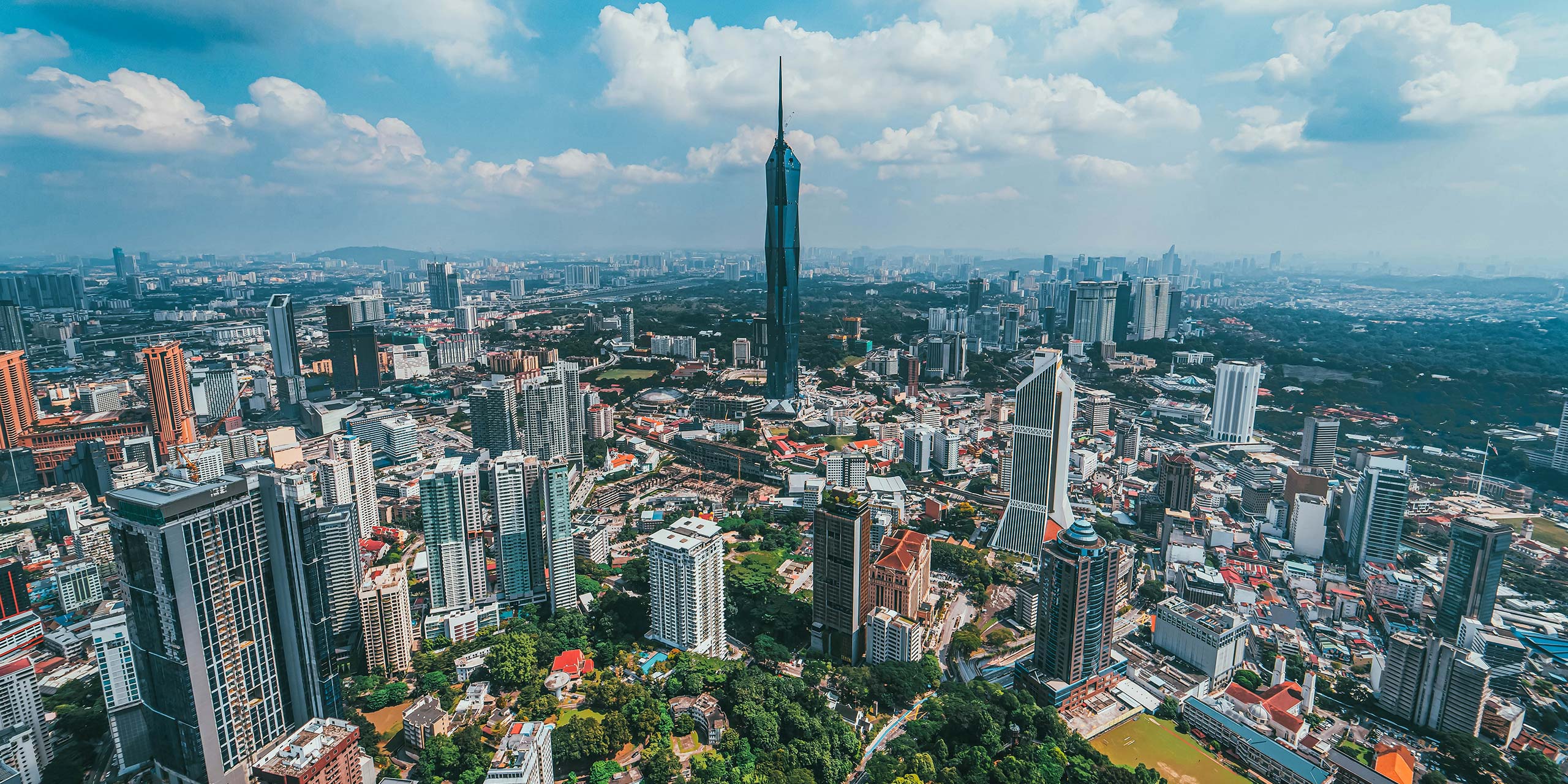
Few places in the world combine futuristic architecture and quaint heritage better than Kuala Lumpur.
The 69-meter-long single-span Saloma Bridge is one most recent example. Completed in 2020 to connect the iconic Petronas Twin Towers with the traditional Malay village of Kampung Baru, this space-age steel structure is shaped like the arrangement of betel leaves offered at Malay weddings and ceremonies. Come sunset, it fires up with state-of-the-art LED lighting.
The latest symbol of Kuala Lumpur’s race to the future is the 678.9-meter-high Merdeka 118, currently the second-tallest building in the world. Like a shiny finger of metal and glass reaching the clouds, the skyscraper soars in the city center right above one of its oldest and most storied districts.
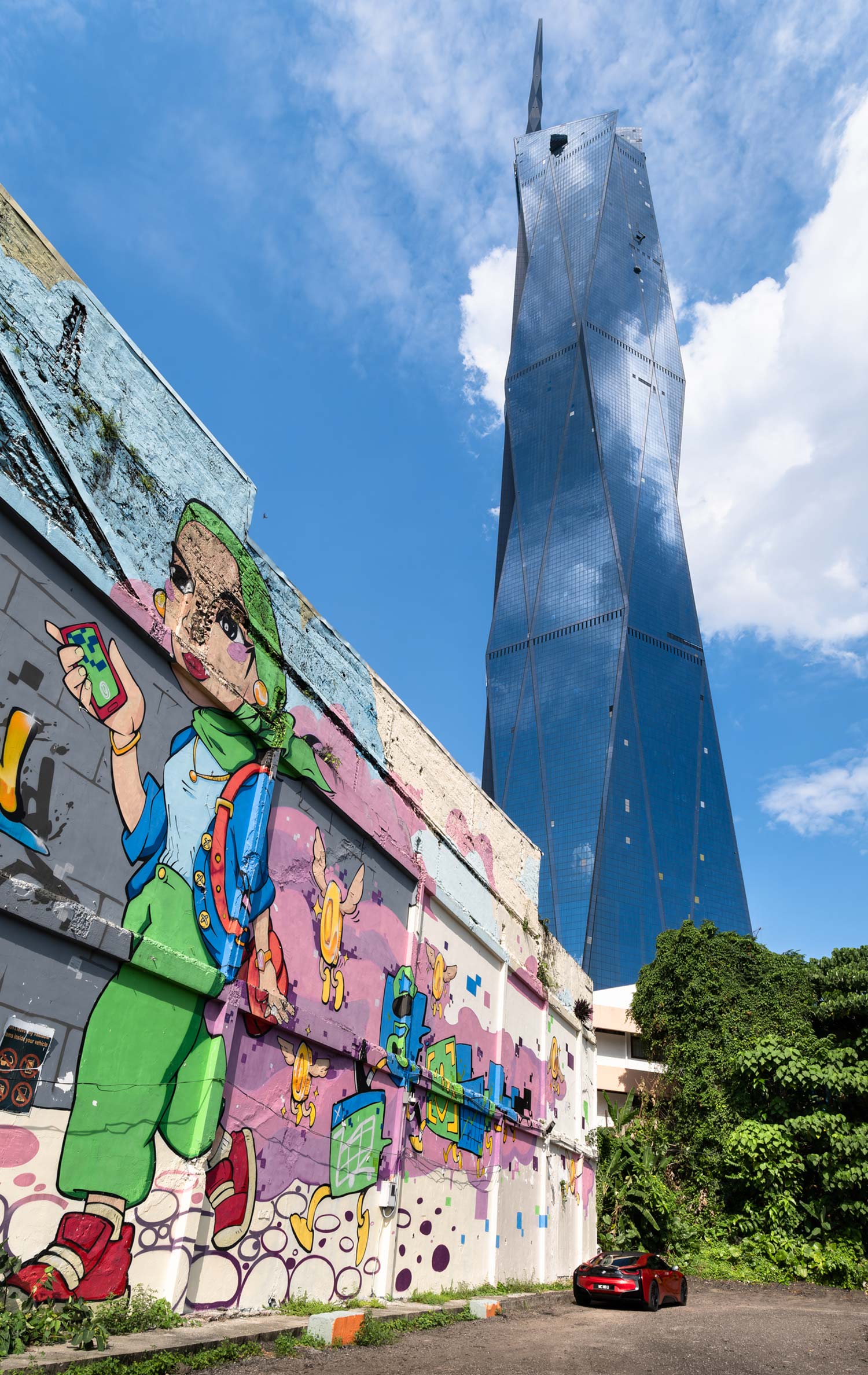
Petaling Street, the heart of Chinatown, originated in the 1870s, establishing as a settlement for overseas migrants from China during the tin mining rush. But when the industry died off in the 1980s, even the shophouses of the newly wealthy fell into disrepair. Since then, Petaling Street functioned as a budget tourist area, and throughout the 1990s, its Central Market was a hive for local artists and musicians.
Forty years on, urban revitalization projects have facelifted Chinatown’s historical lanes Petaling Street, Jalan Sultan, and their back alleys. An array of atmospheric bars, cafes, and community-led artsy hangouts elevated this compact, highly walkable district into Kuala Lumpur’s most eccentric and informal hood.
Widescreen Vision


It took two fires, in 1972 and 2002, and 17 years to rejuvenate the former Rex Cinema, one of the country’s first theaters. The original four-story exposed brick structure has now transformed into REXKL, Jalan Sultan’s new community hub for culture and arts and includes quirky businesses such an ice cream shop-cum-tattoo parlor, the labyrinthine bookshelves of Book Xcess, one of the city’s largest bookstores, plus cozy rooftop dining with perfect skyline views. Three floors below, Back Ground packs inventive F&B options — think local spins on pasta and pizzas, Chinese bao sold off a food truck, and long happy hours that attract creatives from 12 to 6pm.
Ghost with the Most

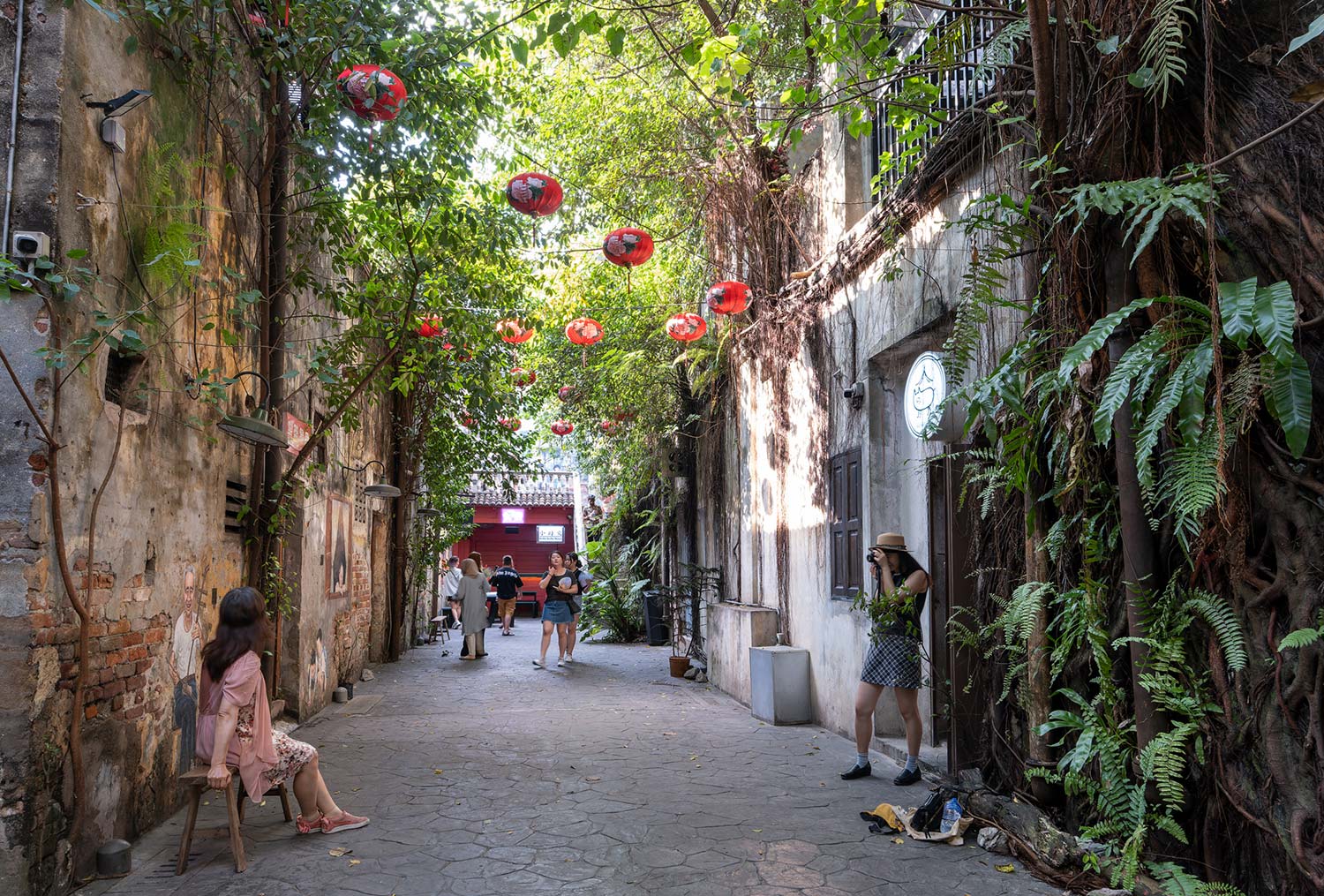
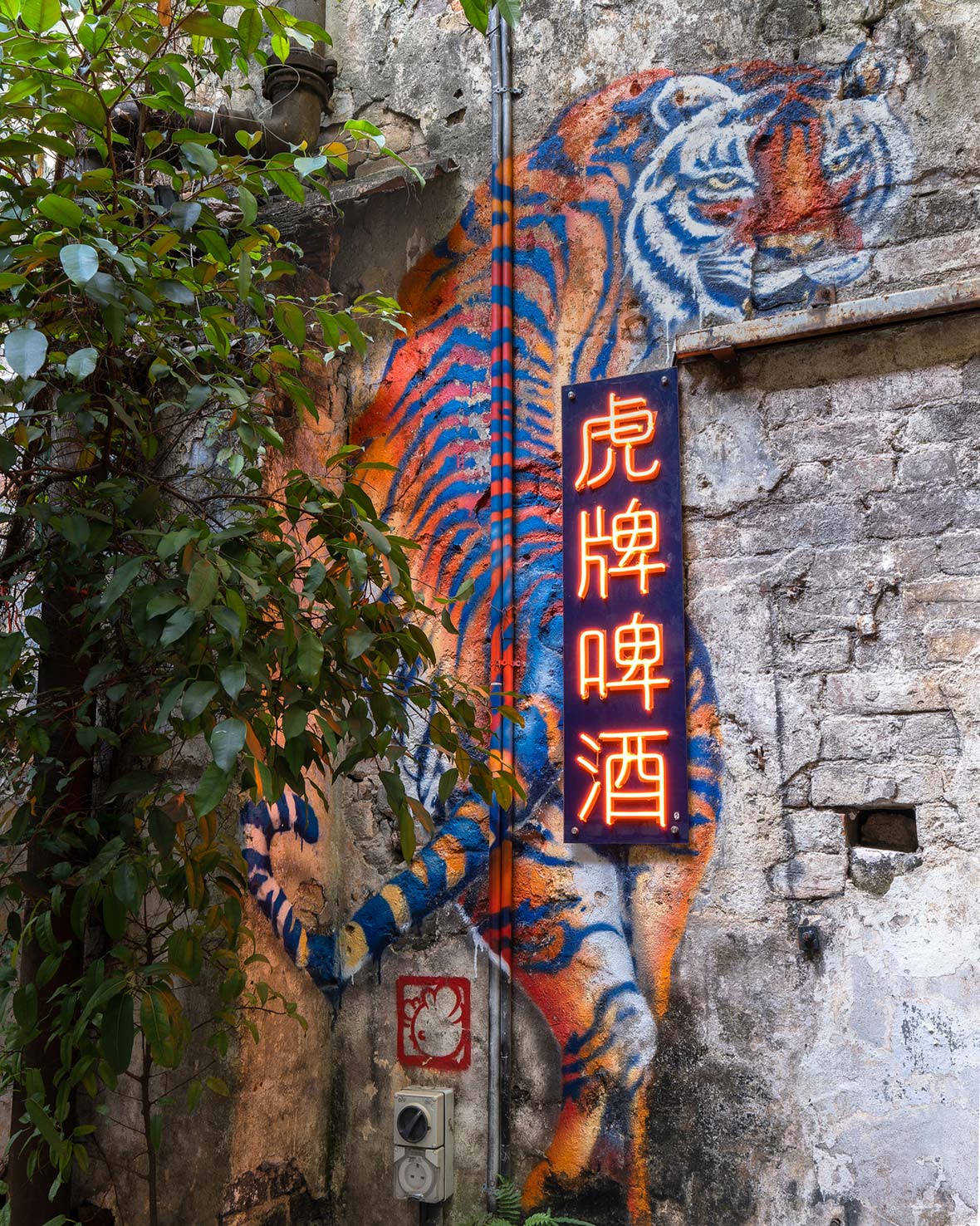
Tucked behind a row of ten colorful shophouses hidden between Petaling Street and Jalan Panggung, Kwai Chai Hong Alley, famed for gangsterism and prostitution, was restored in 2019 and translates from Cantonese to “Little Ghost Lane”. Heritage-themed mural art and installations now celebrate the quarter’s 1960s heydays of Chinese migrants and gangs—look out for an original lamp post from the early 1900s. Even if it gets busy with snap-happy tourists, the speakeasy bars and cafes that line this back alley, like Baijue, Con cub ine, Bubblebee Cafe and Pandan Republic, make it very easy to linger longer.
Where East Meets West

Nestled on the first floor of an anonymous Petaling Street shophouse, Merchant’s Lane pairs fusion flavors with charming shabby chic interiors. Potted plants, dark wooden floor tiles, and tree roots wedged into the walls grab the attention as much as the plates of Italian Chow Mein (scrumptious stir-fried spaghetti tossed in the local fiery chicken rendang sauce), nasi lemak served with pancakes instead of rice, and delicious Asian-tinged burgers.
P.S. I Love You
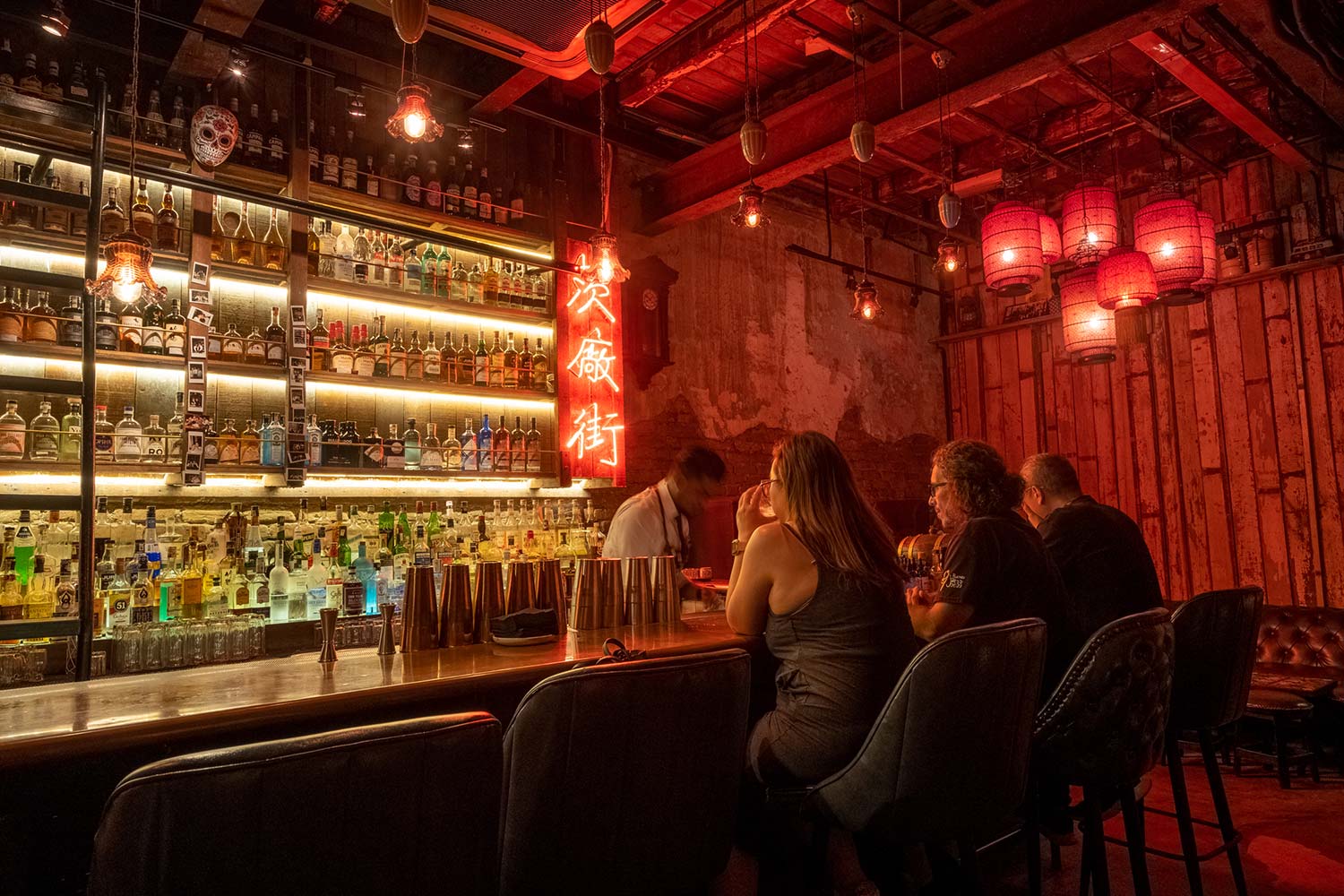
Speakeasy bar veteran PS 150 was the first to open in Chinatown in late 2015. Dimly lit with hanging red Chinese lanterns, this den of mixology hides behind the innocuous front of a vintage toy store. Inside, the historical-meets-moody Wong Kar-wai atmosphere helps cocktails take on fragrant, refreshing tropical twists. Sweet and sour Asamboi-Rita is piquant with salted dry plum-infused Tequila and calamansi juice, while Rumble in the Jungle mixes coconut and pandan rum, Campari, pineapple juice, curry leaf, local rice wine tuak, and gula melaka syrup.
Let the Music Play

Curated by local Jazz connoisseur Jon Teo, Jao Tim is Chinatown’s best spot to catch performances of local jazz, soul, R&B, and duets every night — all marinated in a top selection of beers and spirits. Their intimate table lamp concerts are great to swing a cocktail while some of KL’s best musicians do their magic beside your table.
Alternative types should be also aware of Moutou in nearby Lorong Panggung. This one-of-a-kind rooftop farm and artist-run space is the place where non-traditional, independent music literally thrives above Chinatown’s more commercial humdrum.
Confluence of Culture

Meaning “muddy estuary” in Malay, the city of Kuala Lumpur was born at the confluence of the Klang and the Gombak rivers. After a seven-year RM4-billion government project rehabilitated the banks of the Klang in the city center, new riverside cafes, biking paths, dancing fountains, and night light shows turned the area into a new tourist attraction. The River of Life is the main lookout along Leboh Pasar Besar, marked by the beautiful Moorish turrets of the Masjid Jamek, the oldest mosque in the city, which stands proud where the two rivers meet.
Underground Overground
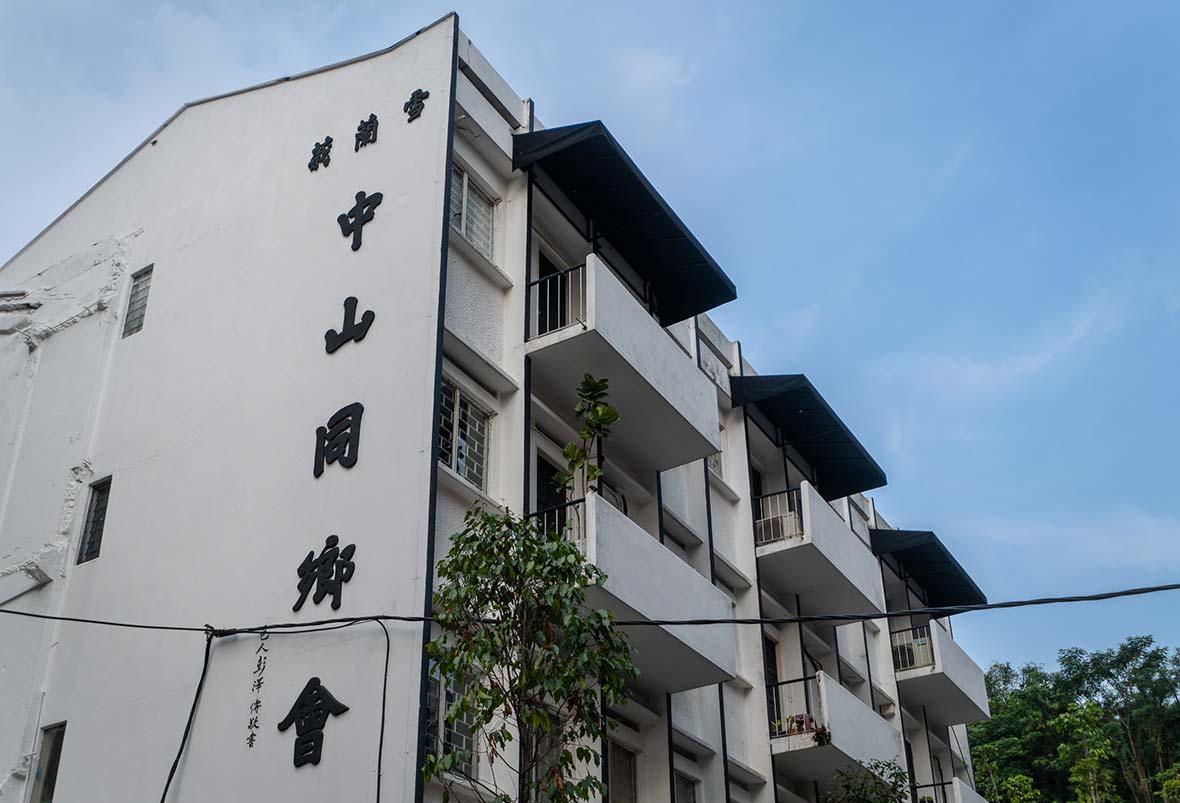

Hidden beyond the southern edge of Chinatown on the other side of the busy thoroughfare Jalan Maharajalela, a close-knit community of artists, researchers, designers, and musicians breathes new life into Zhongshan Building, the former home of Selangor Zhongshan Association. Today it is the home of Tandang, one of KL’s few underground punk and alternative stores, silk screening, and typography studios. Among the rest of Zhongshan’s kaleidoscopic offer, hole-in-the-wall cafe Piu Piu Piu attracts artsy types, and the Back Room houses rotating exhibits from local and international artists.
